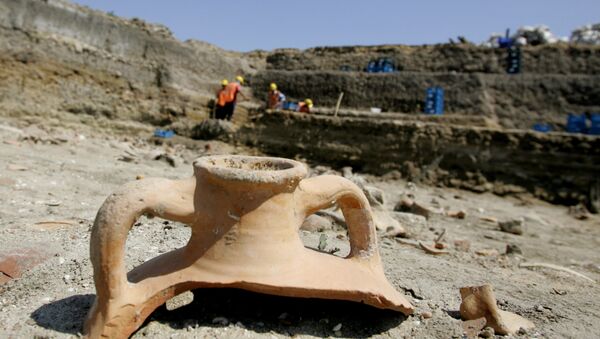Archaeologists from the Oriental Institute have reported making a remarkable discovery in Turkey quite by chance, discovering a lost ancient kingdom dating to 1400 B.C. to 600 B.C.
Working under the Konya Regional Archaeological Survey Project, Asst. Prof. James Osborne of the Oriental Institute and University of Chicago students were mapping an archaeological site as part of the Türkmen-Karahöyük Intensive Survey Project.
The area of Türkmen-Karahöyük boasts an impressive array of traces of famous ancient cities, where one can stumble upon broken pottery fragments dating back thousands of years lying just on the surface.
A local farmer had told the archaeologists that as he was dredging a nearby irrigation canal, he had come across a massive stone covered with strange inscriptions. Aware of the archeological promises the area holds, the researchers immediately acted upon the tip and hurried to the site.
Chicago Oriental Institute archaeologists discover lost city that may have conquered the kingdom of Midas https://t.co/mQECPDznUX pic.twitter.com/1xVAo4qkKq
— doug moncur (@moncur_d) February 21, 2020
“We rushed straight there, and we could see it still sticking out of the water, so we jumped right down into the canal—up to our waists wading around,” said Prof. James Osborne.
The scientists were richly rewarded for their promptness.
“Right away it was clear it was ancient, and we recognized the script it was written in: Luwian, the language used in the Bronze and Iron Ages in the area,” UChicago News cited Osborne as saying.
The farmer helped pull the heavy stone stele out of the ditch with a tractor, after which it was sent to the local Turkish museum. Once it had been cleaned, photographed and readied for translation, Osborne enlisted the help of experts in the Luwian language, OI colleagues Petra Goedegebuure and Theo P.J. van den Hout, both editors of the Chicago Hittite Dictionary.
Once the inscription was translated, it became evident it made reference to a war victory.
The inscription mentioned a king called Hartapu, and Türkmen-Karahöyük was possibly his capital city.
The stele describes the King’s conquest of the nearby kingdom of Muska, better known as Phrygia—believed to be home to the legendary King Midas.
“The storm gods delivered the [opposing] kings to his majesty,” the stone reads.
Linguistic analysis suggested the inscription dated to the late-eighth-century B.C., which seems to correspond to the time that Midas ruled.
The recent discovery also offers a likely answer to a riddle that had puzzled researchers in the area. Several miles to the south is a volcano with a well-known inscription in hieroglyphics that makes reference to a King Hartapu. However, up until now, no one knew who he was, or what was his kingdom. Now researchers believe Türkmen-Karahöyük was the ruler’s capital city.
The discovered city was massive, believes Osborne, and may have spanned over 300 acres in its prime. This would make it one of the largest ancient cites in Turkey.
Osborne, who is already planning his follow-up visit to the site, says:
“Inside this mound are going to be palaces, monuments, houses. This stele was a marvelous, incredibly lucky find—but it’s just the beginning,” he said.





